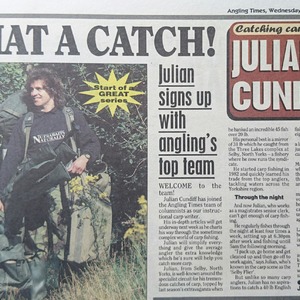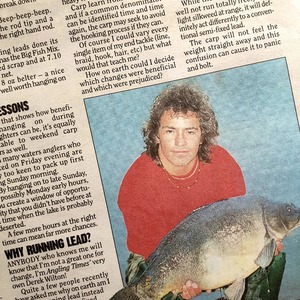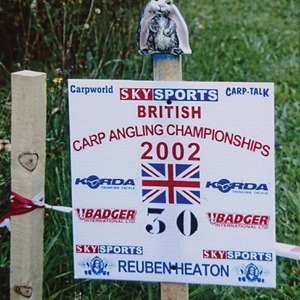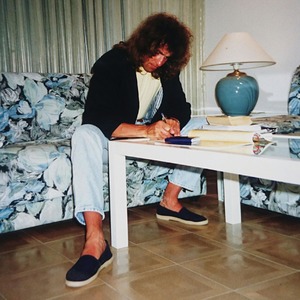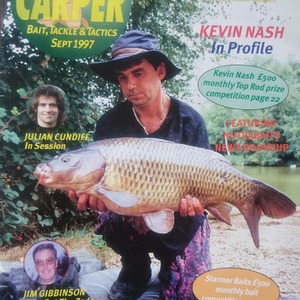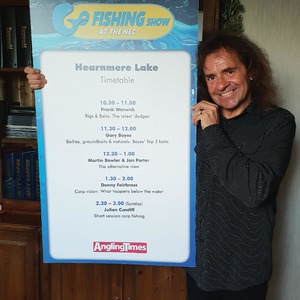The Y2K Carp Fishing Boom
If carp fishing in the 90s was all about tackle and bait development, then the Noughties was the era when it went mainstream
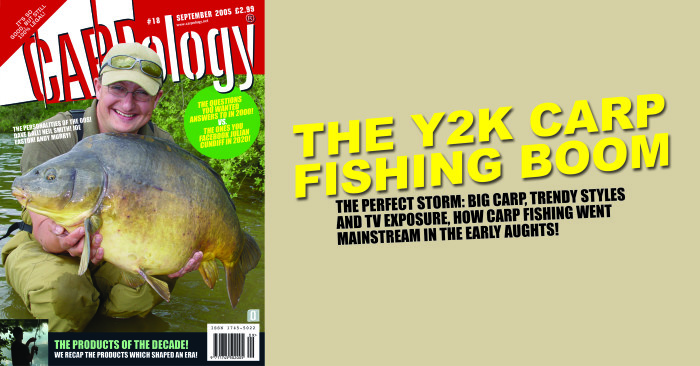
If carp fishing in the 90s was all about development, the Noughties saw the boom of its popularity. The explosion of venues in France, competitive carp fishing was just beginning, the growth of big fish in the UK, and some major new players in the game. It’s seen by many as the era when carp fishing came of age, became cool and went boom. Here’s what made up the headlines and what the key people in the trade made of it all…
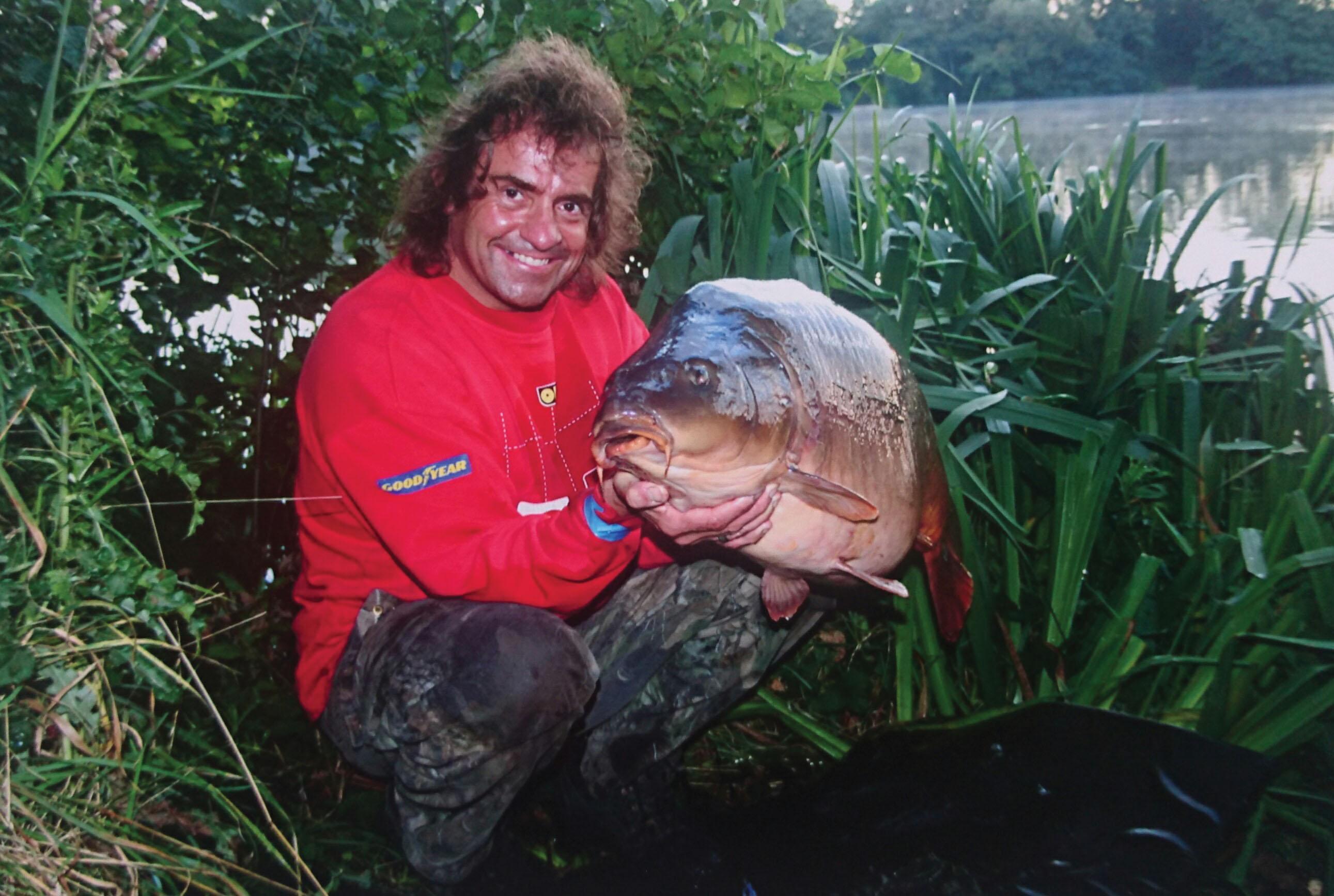
It was clear to see that carp fishing was going mainstream from the mid-nineties, and one man right at the very heart of that movement was Julian Cundiff. Author, presenter, consultant, and at one stage in his life, the editor of two of the UK’s biggest and most heritage-rich carp magazines. Jules has seen, heard and lived through it all when it comes to the rise of carp fishing in the UK…
CARPOLOGY: Can you remember a specific time (year) when it was clearly evident that carp fishing was becoming more and more mainstream?
JULIAN CUNDIFF: “Good question. I’d been involved in the industry since 1987 with my Carp Fisher editorial days, but when Practical Carp Fishing was released in 1993 I could see it happening. Angling Times contacted me to do some weekly carp content for them and to start with it was going to be around a quarter page in black and white or occasionally colour. I think the word ‘lip service’ comes to mind. By the winter of 1995 it was a full page, in colour, and then sometimes a page and a half. So by the mid-nineties it was clear that it had really taken hold and gone mainstream in a fishing sense of the word.”
CARPOLOGY: Was it also noticeable from the number of letters you were receiving at that time?
JULIAN CUNDIFF: “I’d always answered letters as my (parents) address appeared in Carp Fisher but as soon as Carpworld and Angling Times included it, then it really took off. Julie and myself would have November and March holidays in the sun and I was having to have an additional day off when we came back just to catch up on post! On one occasion there was so much post that it had gone so far forward in the hall that it had tripped the intruder sensor which was angled a few feet out from the door! There were over eighty letters, parcels, etc. all connected to carp fishing.”
CARPOLOGY: That’s crazy! When did ‘how do I get sponsored?’ start to become a common question for you to answer?
JULIAN CUNDIFF: “To be honest, the blatant ‘how do I get sponsored’ question came in the late Noughties as the two I got asked most were on how to get into magazines and join certain waters. In the nineties if you caught carp regularly then companies kind of contacted you. It was almost as though anglers were happy to pay full whack as there were comparatively few ‘names’ about. I remember Mainline coming in and aggressively targeting the sponsorship side of things and all of a sudden you didn’t need to be in the magazines writing features to get sponsorship. Carp-Talk played a massive part in this with catch reports and turned ‘unknowns’ into ‘knowns’.”
CARPOLOGY: You were editing two of the country’s biggest selling magazines - Carpworld and Crafty Carper - at this time, what was that like? Content, which the public were craving during this period, was pretty much limited to print, so how exciting was it planning and putting together those magazines?
JULIAN CUNDIFF: “To be fair it wasn’t just two. I was still involved in Carp Fisher, I was doing both Carpworld and Crafty and helped in the initial launch of Advanced Carp Fishing. David Hall, the publisher of ACF, had asked me to edit that too but I was not prepared to jettison Angling Publications and Tim, so I ‘assisted’ Bob Roberts with its early issues as he was never a carp angler. It was intense beyond belief, especially as I had just moved into my first home, was working full time and still doing overnighters. Tim Paisley had taught me a strong work ethic, I knew loads of people through The Carp Society, wasn’t a bad judge of character and I was prepared to graft my balls off to ‘achieve’. Tim was a great ‘ideas and concepts’ man and I was bloody good at putting them into action via letters, phone calls and turning up at their houses. Exciting times but it just seemed to be the norm for me as it hadn’t been done before and I knew no different.”
Marketing became king
Some big names were made and plenty “wannabes” were quickly shot down during this boom period. The carp angling balloon was in full flow and the latter part of the decade became synonymous with the ‘manufactured carp angler’. A little bit like the music industry grabs talent and moulds it into what they want, the same thing happened within the fishing industry. It wasn’t good enough anymore just to be good angler; you had to be the whole marketing package, as companies soon realised that the strongest weapon they had in their armoury was marketing power as opposed to just simply good products and honest people. And well marketed toot began to sell like hot cakes.
Realtree camo
Circa 2003 until 2007/8, it was all about Realtree camo. The likes of Terry Hearn and Nick Helleur were the trendsetters, and it wasn’t long before every major brand had a Realtree licensing agreement, producing everything from bivvy and beds to sleeping bags and bait buckets in Hardwoods Green or Advantage Timber.
CARPOLOGY: Looking back through those 2000-2005 era editions, the type of ‘personality’ seems to differ greatly to those of today. It seemed back then it was more about the person’s ability to write and catch fish rather than how ‘cool they looked’, would you agree?
JULIAN CUNDIFF: “Absolutely. It was all about the person’s ability to write something interesting and nothing to do with whether they had sponsors that advertised or not. I genuinely had no idea who was or wasn’t placing adverts so I simply badgered who I thought was interesting, would resonate with readers and would sell copies. Nothing was ghost written or prepared by media managers, although at times I did have to ‘flesh out’ the work from Rod and Ritchie and find appropriate images. Nowadays it’s very sanitised and unless you are on television it really is much of a muchness in my opinion. That said, maybe if I was 16 it would be a whole different ball game?”
CARPOLOGY: Was it noticeable from the letters you were receiving to the feedback from the readers of CW and CC, that a lot of new anglers at this time were being born straight into carp fishing rather than doing the previous ‘coarse fishing apprenticeship’ of the 70s, 80 and 90s?
JULIAN CUNDIFF: “Without a shadow of a doubt. The letters I got in the eighties were from carp anglers who’d been anglers most of their lives. Many had progressed from coarse to specimen to carp angling (as I had). In the early nineties there were definitely those that had started coarse fishing but jumped straight from that to carp fishing, missing out on what we used to call ‘specimen hunting’. By the late nineties/early noughties it was clear that many started fishing by fishing for carp. The weeklies would often have carp on the cover, Korda had made carp fishing ‘sexy’ for youngsters and that genie was definitely not going back into the bottle ever again.”
CARPOLOGY: What was the most common tactical question you used to get asked in the early 2000s?
JULIAN CUNDIFF: “At that time it was still pre-internet so questions came via letter or on the bank and were what I call ‘generalistic’: “This is my water Jules, I’m not catching, so please help me.” Carp anglers accepted it was NOT just one thing and were open minded as to advice on location, bait, rigs and tactics. All well and good but you couldn’t answer it on one sheet of A4, it took loads. Nutrabaits printed up a six page ‘how to’ guide for me to send WITH a letter so it helped a bit. I guess if I had to narrow it down to one thing it would be a bait recipe. How many times did I detail the Strawberry Jam/Cornish Ice Cream one or latterly the Big Fish Mix one…?”
CARPOLOGY: How does that differ in 2020?
JULIAN CUNDIFF: “Definitely rigs. The modern day carp angler seems to think that just ‘one thing’ will make all the difference, whereas in reality they probably need to do most things better. Multi Rigs, sharp hooks and the like I get asked time and time again, so I have two social media images detailing in infinite details the twelve steps on how to make one. Thankfully most queries (but not all) come via social media so the answers are easier to send (and a lot more concise).”
CARPOLOGY: For you, what were the standout products which came to market in the early 2000s?
JULIAN CUNDIFF: “Being the most unfashionable ‘name’ out there, I’m probably the worst person to ask. What I can say is that from 2000 onwards, innovation in dynamic terms really slowed down and products became more and more ‘fine-tuned’. To be honest, this was a good thing as there was less ‘field-testing’ done by the unsuspecting public but what we did get performed better and lasted longer. Rods, reels, main line, buzzers, bedchairs all improved and with competition, products became more affordable… especially when being made in China!”
CARPOLOGY: What about fish sizes and stocking volumes - did that follow the curve with the number of anglers taking up the sport?
JULIAN CUNDIFF: “Definitely. Once the boilie industry kicked off, especially with readymades, it started being applied in kilos not ounces. No longer did you need a freezer as many firms readymades were just as available (notice I didn’t say as good) as their freezer baits. More anglers and more bait equalled bigger carp - without a doubt. You had ‘bait wars’ where ‘product assisted’ anglers thought more was better and more likely to ‘win’. Bait became available off the shelf so most tackle shops stocked up on it, and available bait became purchasable bait that ended up going in quantity. You didn’t have to roll your own to have a ‘good’ bait so fish growth was inevitable. A perfect storm really.”
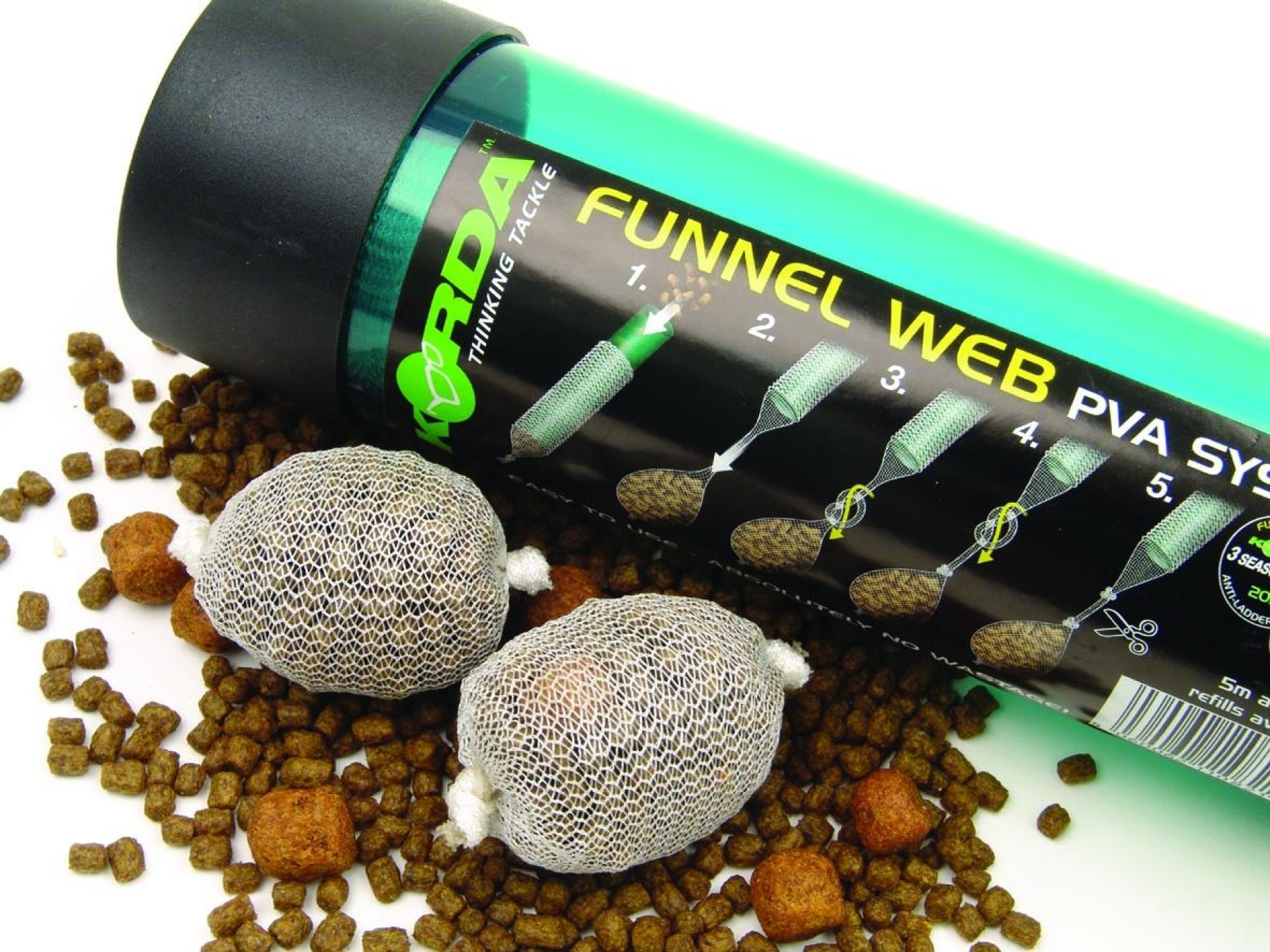
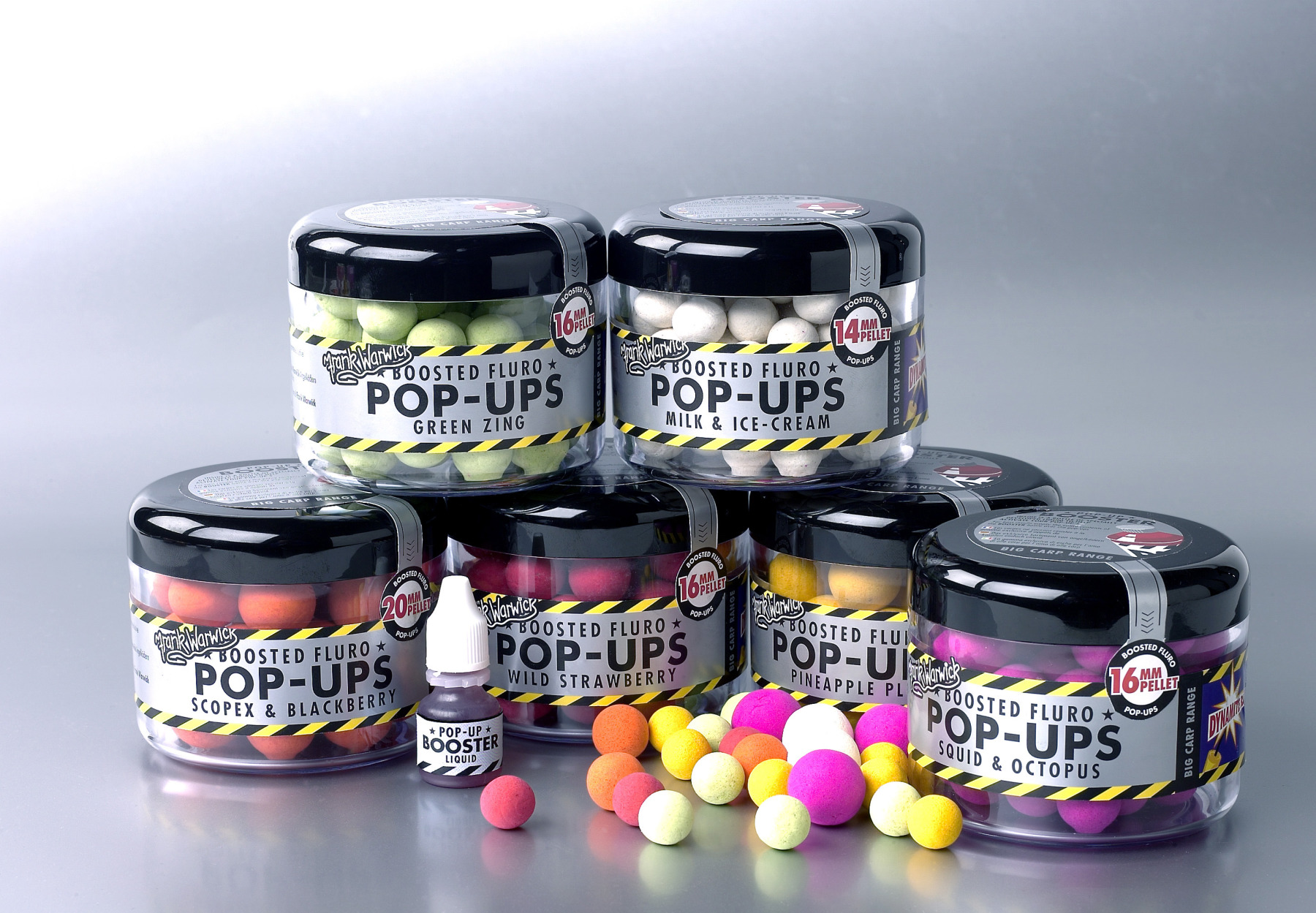
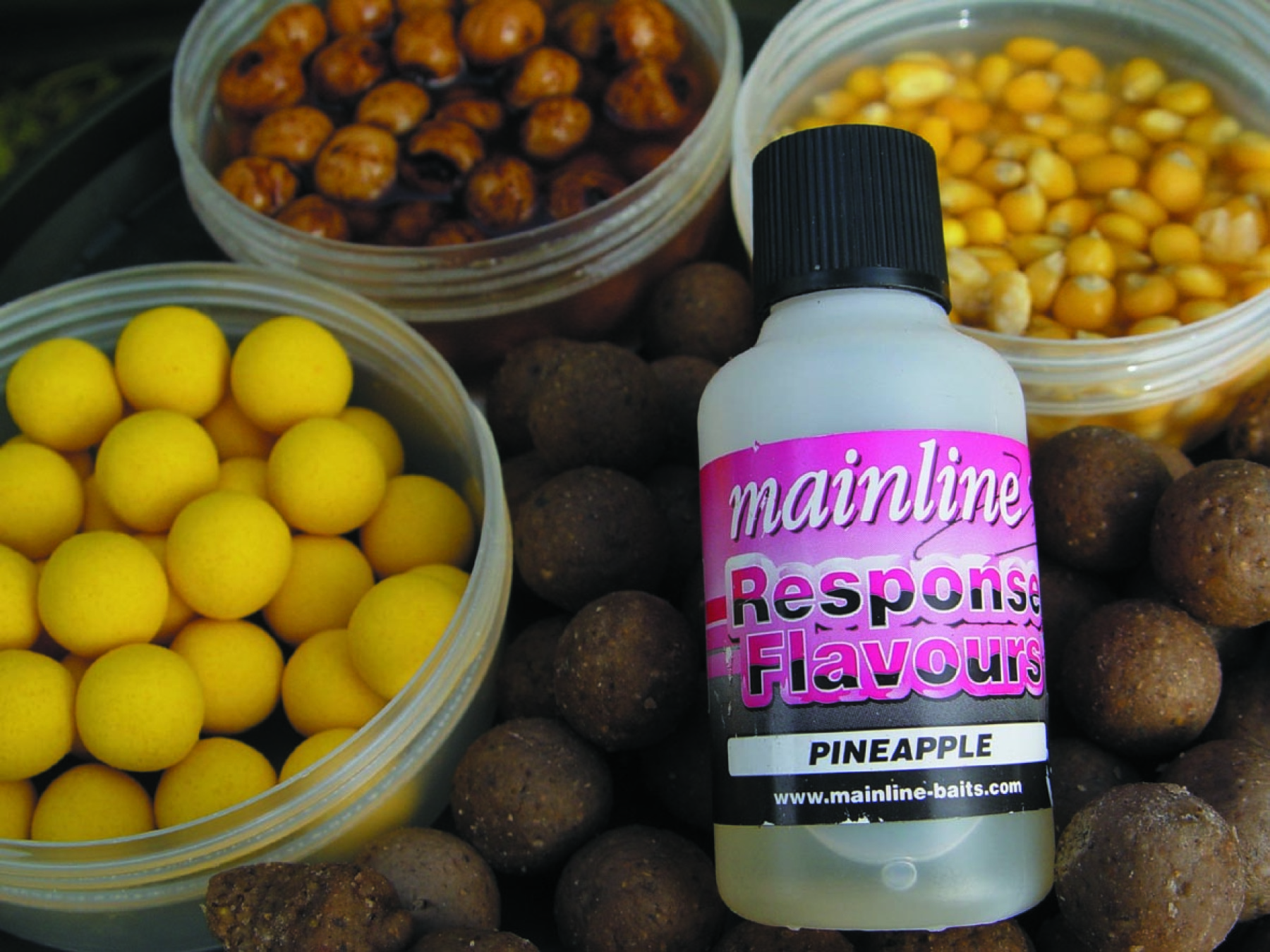
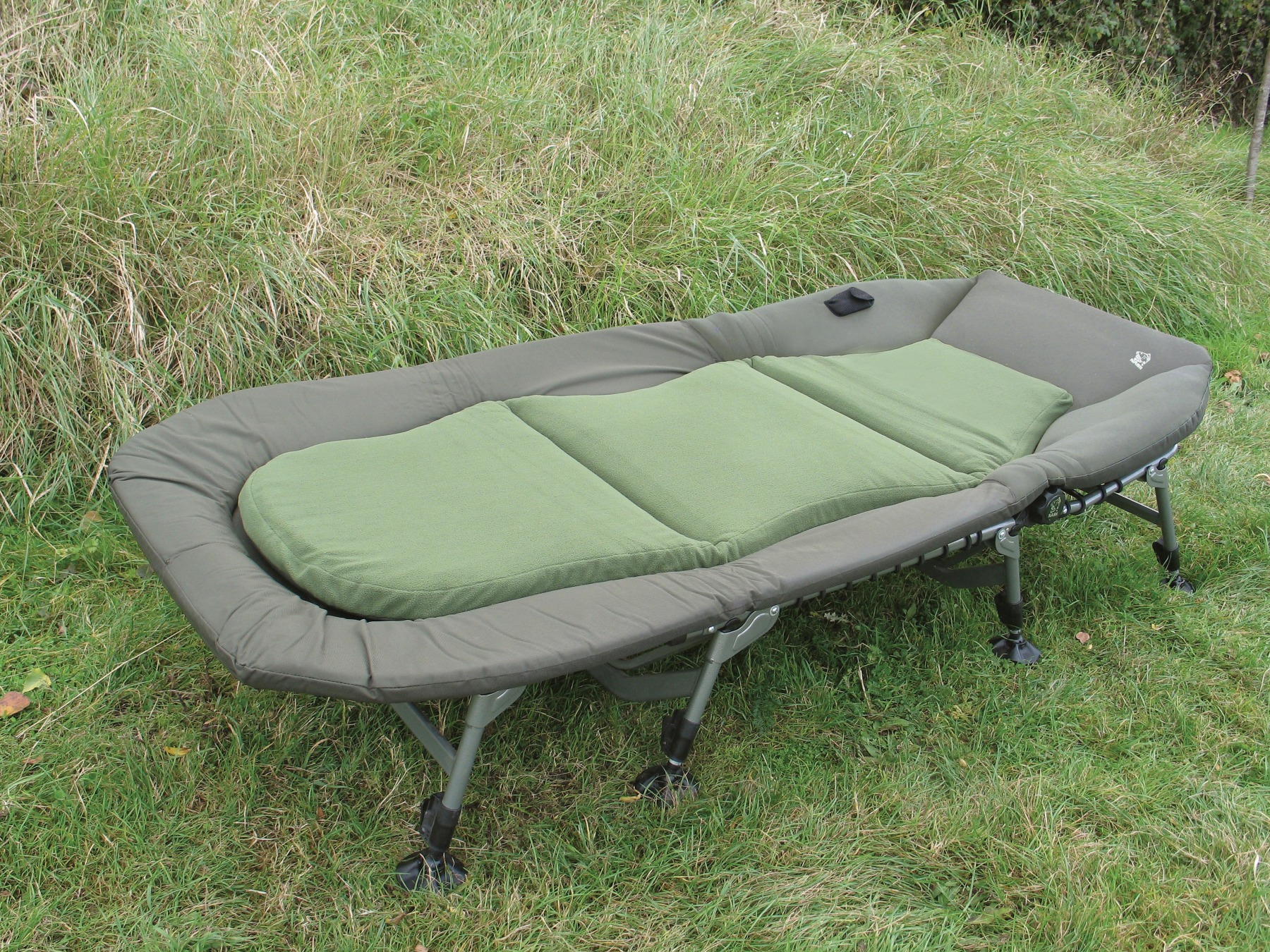
CARPOLOGY: Finally, can you summarise how carp fishing feels in 2020 compared to 2000?
JULIAN CUNDIFF: “The answer to this really depends on whose eyes you are looking at it from? I know that some anglers think that compared to 2000 the modern carp scene is awful… that said they seem to forget they are benefiting with the size and availability of carp and the quality and cost of really good tackle and bait. Whenever I feel jaded I always remind myself that nobody is forcing me to do it and I can always find somewhere to do it on my own terms.
“Honestly, in most areas we have never had it so good apart from predation. Crayfish, cormorants and otters are not going away and compared to 2000 the effect they are having on some waters is catastrophic. We are still in a nimby mode but in the next few years I see serious problems for most rivers and any stillwater not fenced. But in basic terms I feel carp fishing is much better. I think it feels at times that efficiency is killing some of the magic, we are becoming just too bloody good and efficient at catching them. As long as it feels good to me I will do it, and like everything, the answer is generally in your own hands/head. Enjoy it for what it is because in ten years time you will realise you never had it so good as in 2020…”
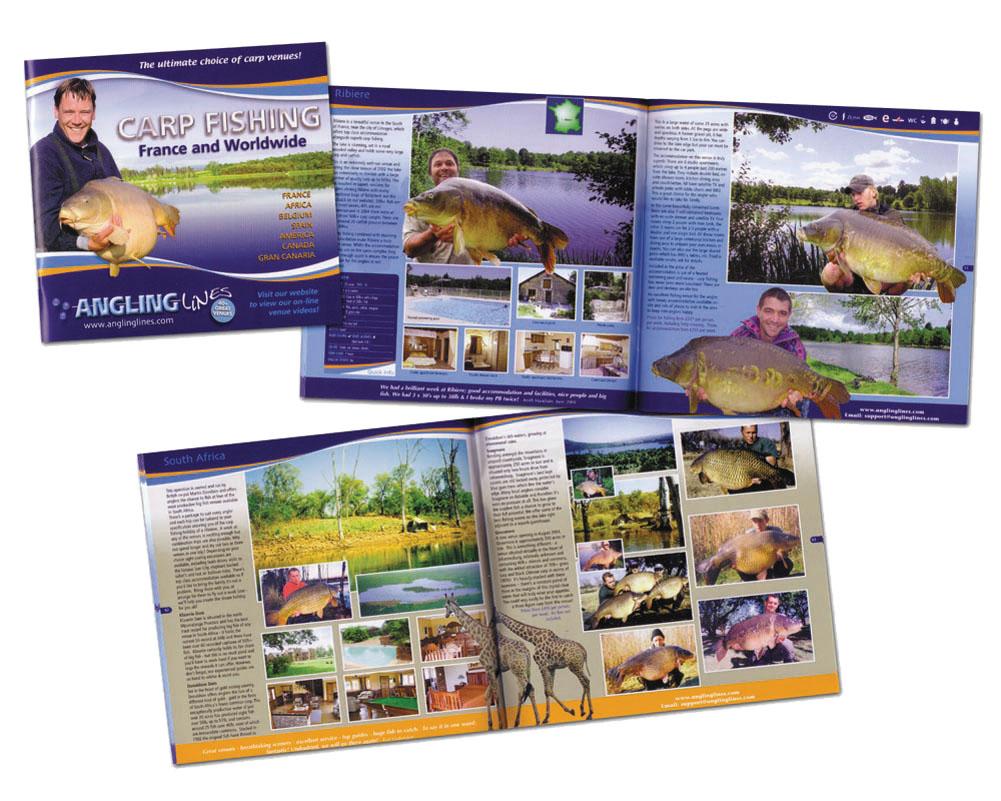
In the late 90s and early 00s, the overseas holiday market started to become big business. One of the companies driving that was Angling Lines - an online booking agency which was headed up by David and Heather Keep. Still the market leader today, AL have almost 50 venues on their books, but what was life like back in those early years?
CARPOLOGY: Can you remember a specific time when it was particularly obvious that overseas fishing holidays were becoming big business?
HEATHER KEEP: “I’d say it was around 1999. We set the business up in 1998 and within a year we’d got around 15 lakes on our books (mostly French owned). This seemed to create “critical mass” and bookings started to take off.”
CARPOLOGY: During those early years, which types of lakes and in what locations were most popular?
HEATHER KEEP: “Mainly the bivvy only lakes, the accommodation market was still very new - i.e. not many anglers were thinking of taking partners/families; just the idea of going to France for a week with mates was quite new itself. Location-wise, as close to the ports as possible! Just the same as today really.”
CARPOLOGY: But are there now more people more willing to travel further into France?
HEATHER KEEP: “Yes, if the lake is good enough, folk now have the confidence/trust in us to make a longer journey, but on the whole, the North (under four hours drive) is still by far most popular.”
CARPOLOGY: How much has your business evolved since the early 2000s (i.e. from the type of holidays you offer and the distance people are willing to travel, to different locations around the world?)
HEATHER KEEP: “I’d say very little frankly! We’ve certainly not moved out of France. We tried multiple locations around the world for several years in the early 00s but it never got any traction so we withdrew. Vis-a-vis carp lakes, venue standards and facilities have improved, along with angler’s expectations of these. Carp are definitely bigger too, but the market still looks for the same basics: “a good chance to catch a lot/big carp in peaceful surroundings where they can feel the lake/swim is theirs for the week.”
CARPOLOGY: What were the most common questions you got asked by customers back in the early 2000s?
HEATHER KEEP: “1. What are my realistic chances of catching? 2. Will I be okay driving in France? 3. Will I be okay in the supermarket re the language? The first still applies; the last two are definitely far less frequent these days.”
CARPOLOGY: What about in 2020?
HEATHER KEEP: “Which lakes have the biggest carp.”
The Personalities Of The 00s
Jason Callaghan: ‘The Haulin’ Smurf’ hailed from Yorkshire and set-up Sticky Baits in the 2000s.
Neil Smith: A popular contributor to Total Carp magazine in the early to mid-aughts, Smithy was adept at getting bites on limited time from open-access venues.
Dave Ball: Often called ‘Young’ Dave Ball to differentiate him from his older, and no less famous namesake, Dave forged a reputation as a prolific catcher of the hardest carp in the 2000s.
Joe Easton: ‘Joe 90’, as he was known, was a hauler of some standing, and his album bulged with thirties.?
Dave Mallin: His capture of The Black Mirror and the Mere Linear cemented his place at the very top of the big carp tree.
Andy Murray:A regular on the carp-match scene in the early 00s, as well as the magazines.
Jason Cann: Jason was a talented angler (indeed, he still is!) who made a name for himself in front of the cameras, as well as on the match scene.
Derek Ritchie: An absolute stalwart of the magazine trade, Derek, or The Don, as he became known, had regular features in the top magazines right through the Noughties.
Martin Clarke: During the early 2000s, Martin was right at the top of the big carp scene and capped off his time in the limelight with a well-received book, Strictly Carp.
Richard Skidmore: Richard was co-owner of Nutrabaits, which was a huge brand in the 2000s, and a good angler in his own right.
Steve Renyard: ‘The Weekender’ himself was a fixture in the DHP titles from the middle 2000s, venturing far and wide in search of carp for his popular feature.
Richard ‘Cash’ Farnan: One of the industry’s larger-than-life characters, Cash was the face of Gardner Tackle in the 2000s, leaving them for publisher, DHP.
Ian Poole: A massively popular writer in both Carpworld and Crafty Carper, Ian was hot property for any company and his consultancy deals included Shimano and Richworth.
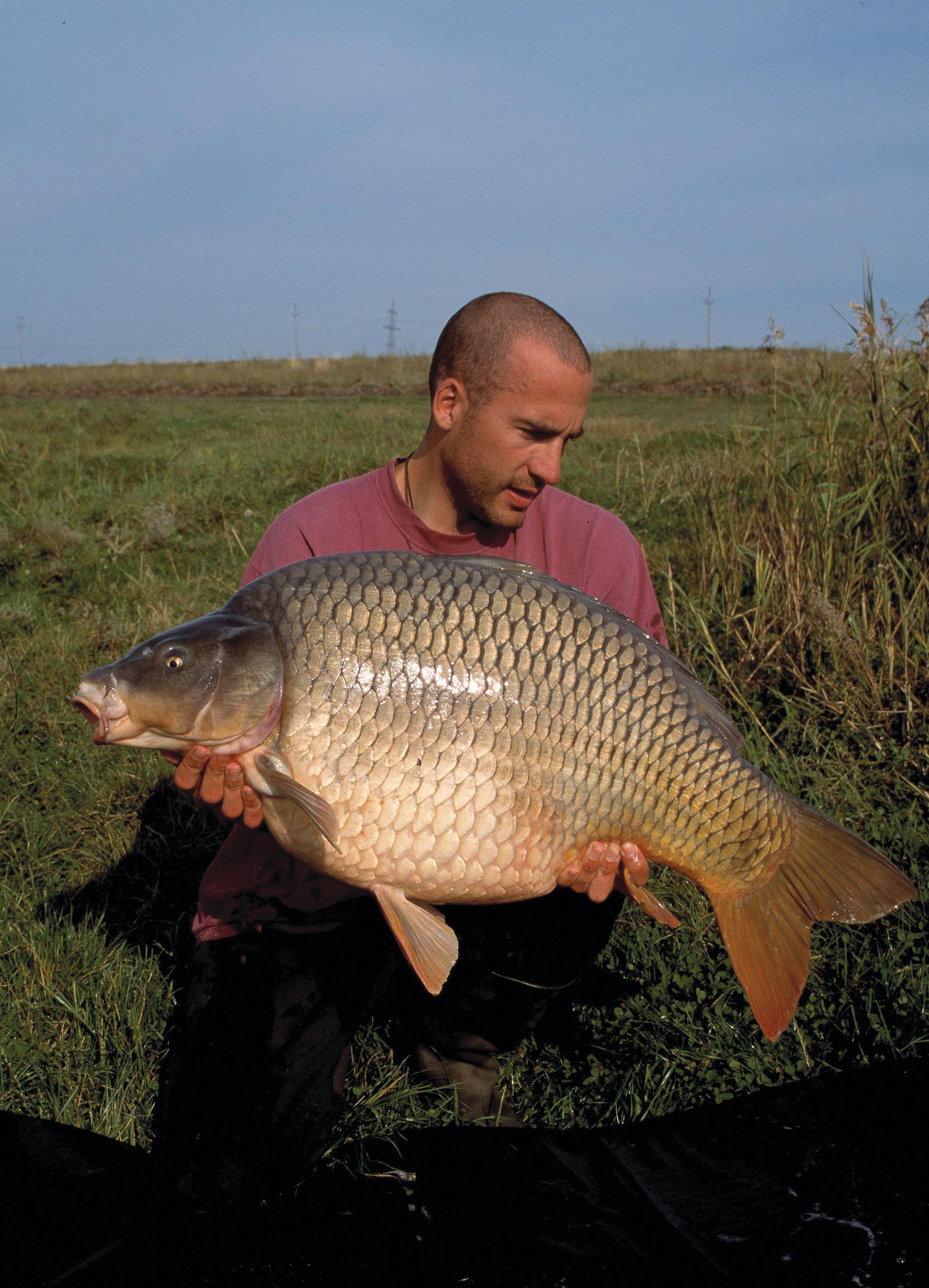
How much impact did this growth in carp fishing have on the weekly magazine, Carp-Talk? Simon Crow, the magazine’s editor for 12 years lived through the whole era…
CARPOLOGY: Was there a period when there was a noticeable increase in the number of catch reports coming into CT?
SIMON CROW: “Not really, no, it was only ever seasonable. In the winter it always used to slow down, but right the way up until the magazine ended in 2018 we were still getting inundated with catch reports. At the height of the season, some days we’d arrive to around 200 catches reported in a 24h period. In the worst depths of winter, it would be down into single figures, but I can’t remember there ever been a day when we didn’t get a catch sent in.”
CARPOLOGY: In your eyes, how much impact did the stocking of ‘Simmos’ have on carp fishing? Did you see a big increase in catch reports of this strain of carp?
SIMON CROW: “These fish have had a massive impact on UK carping, especially at the day ticket waters. Even as far back as 1994 when CT started, Mark Simmonds (Simmo) used to write a column about Broadlands where he worked, showing regular catches of his fish. When Simmo left Broadlands and became a full-time fish farmer he continued to write a column in Carp-Talk which was called Southern Report. This always had a Simmo slant as it usually featured waters he’d stocked, like those on the Isle of Wight, Todber Manor, the Ringwood area etc. In the early 1990s, Linear Fisheries moved from Bedfordshire (now Linford Lakes) to Oxfordshire and steadily received Simmo fish from then onwards. The popularity of that complex has grown and grown, and the increase in catches from there was obvious from about 1998 onwards.”
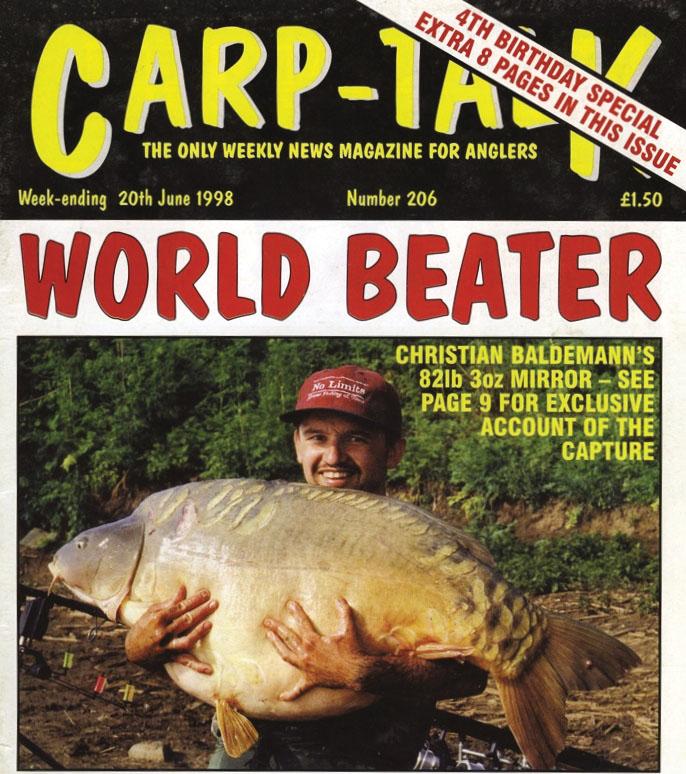
CARPOLOGY: Can you remember the time when there was an increase in the number of people wanting to advertise their French holiday venue?
SIMON CROW: “Right from the very early issues there was always a lot of French fisheries advertising. Dream Lakes and Les Quis were both very big supporters of the magazine through the 24 years of its life. The late 1990s, however, saw a boom in English-owned French fisheries. Some weeks you’d see more than a dozen French lake adverts, and very often these were rotated bi-weekly.”
CARPOLOGY: Was there a period when sales figures of Carp-Talk just grew and grew? When more and more people were getting into the sport and the thirst for knowledge (both technical, news and catch reports) was huge and really only available in print?
SIMON CROW: “Not that I know of. I was led to believe from Kevin Clifford that the biggest selling issue was the very first one because they printed a lot more and distributed it far and wide to get it out there. The print run was then dropped back once they started to get a feel for the number of readers that were out there to save on the costs of wastage (unsold copies on the shelf). I was told that the next best selling issue was from 1998 with the headline ‘World Beater’ which featured the picture of the Lake Raduta world record held by Austrian angler Christian Balderman (aka Baldemair). It steadily sold around 10k issues each week for many years and in the last few years it was down to around 5k per week.”
CARPOLOGY: How did the tackle and bait trade shows differ from the 90s to those in the early to mid-2000s?
SIMON CROW: “These changed a lot over the years. The very first one I did was with Nash in about 1995 when there were about a dozen shops there. Kevin put a big meal on and then talked the shops/press around the new products. From memory it was held at Orsett Hall in Essex. The tackle industry in the mid-90s was very relaxed as everyone knew everyone else, so it was a gathering of mates. The first formal one I went to was a couple of years later when I started work for Rod Hutchinson. His company was run by Relum and then later on by Sharpes that were both very formal. Fox were also very formal in those days, and if I’m honest I never liked dealing with Fox back then. They were quite arrogant in the way they worked, which is massively different to how they are today. The lads that run Fox today are such a contrast to what they were like twenty years ago.”
CARPOLOGY: What about angling shows?
SIMON CROW: “As carp fishing has grown, these have changed massively. The first carp show I went to was in about 1990 at Dunstable Hall, Luton. It was a gathering of like-minded serious carpers and is best described as a bit of a social where the highlight was watching whoever was doing the main talk (there were usually a couple on). In those days, everyone kind of knew everyone else, or at the very least you knew faces. Nowadays, carp shows attract about 25% of those same like-minded carp anglers with the rest made up of general anglers who enjoy a bit of carp fishing along the way. The industry has changed massively over the last ten or so years. TV has played a massive role in this, attracting lots of new anglers who probably only go carping every now and then, and mostly go to the shows to get a bargain or two.”



